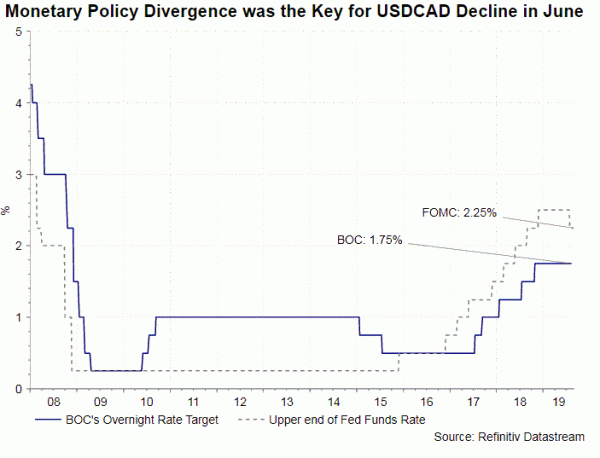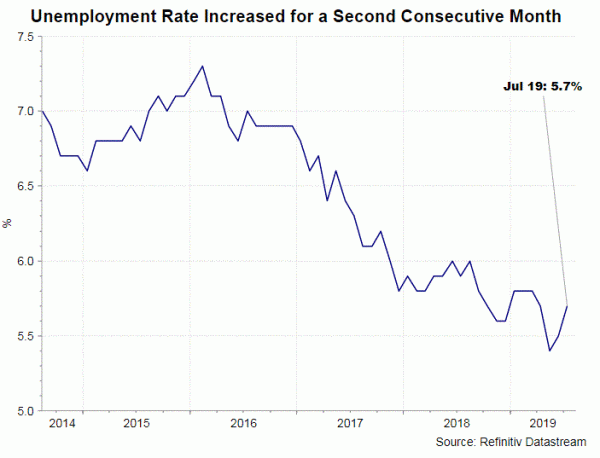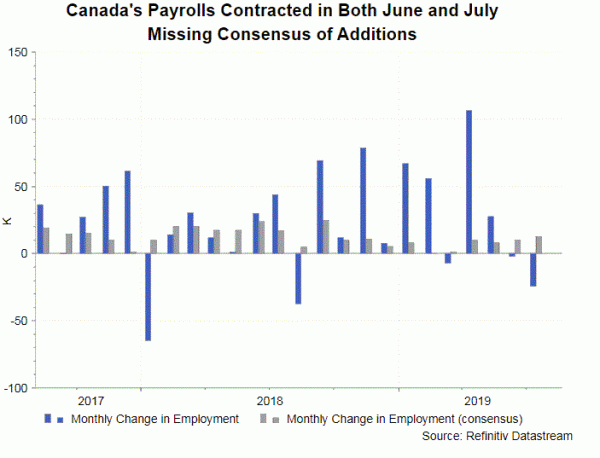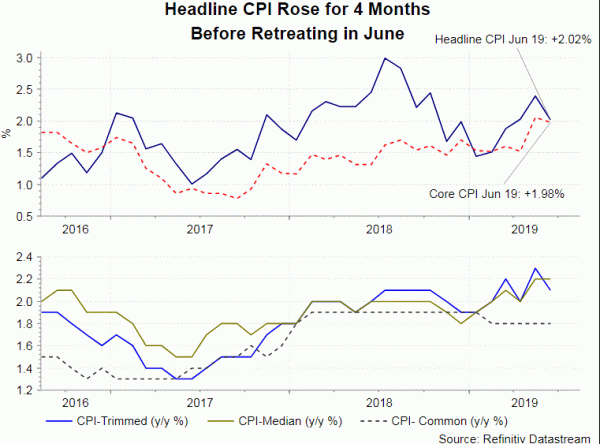Risk to Canadian dollar is skewed to the downside in the near term. Disappointing economic data since the July BOC meeting have raised speculations of a rate cut, although the consensus remains no change in the monetary policy for the rest of the year. Crude oil price, a key driver of the loonie, should remain volatile in the near- term as US- China trade war would not be resolved any time soon.
Crude Oil Price
As a major oil exporter, mainly to the US, movement in crude oil price is highly correlated to that of Canadian dollar. The correlation between CADUSD and WTI crude oil price is over +0.6 using data in the past 6 months. The chart below also shows that the selloff in crude oil prices in mid-July had sent Canadian dollar lower against US dollar. The outlook of crude oil price depends highly on the developments of US-China trade war. Despite Trump’s delay of tariff on some of Chinese exports, uncertainty remains high and the market generally has ruled out the chance of a trade deal by 2020. The outlook of crude oil price, hence the loonie, would remain volatile.
Monetary Policy Divergence
Monetary policy divergence between the Fed and BOC was a key reason for the strength of Canadian dollar against the US dollar. The market had been anticipating a rate cut by the Fed in 2Q19, culminating to the actual announcement of a -25 bps reduction in the Fed funds rate at the July meeting. Meanwhile, BOC maintained the policy rate a 1.75% in July. Despite adopting a more cautious tone about the impact of trade tensions on economic activities, policymakers acknowledged that domestic growth was “around potential”, thanks to strong performance in consumption with the support of a “healthy labor market”.
Dataflow Shows Rising Downside Risks to Growth
However, economic data released since the July meeting have been disappointing. Unemployment rate increased for a second consecutive month to 5.7% in July. The number of payrolls fell -24K, compared with consensus of a 12.5K addition. The fall was the biggest in a year and was mainly driven by job losses in the private sector (-69K). Yet, hourly wage expanded +4.5% y/y, the highest since 2008. Retail sales surprisingly fell -0.1% m/m in May, missing consensus of a +0.3% gain. Excluding motor vehicles and gasoline, the gauge contracted -1%. The detailed report shows that retail sales fell in every province except Ontario and Quebec. Weakness in the housing market might have weighed on spending as data suggested that a recovery in housing market is in progress the eastern part of the country, but not yet in the western part. Headline CPI slowed to +2% y/y in June, from +2.4% in the prior month. Core CPI also eased to +2% from +2.1%. Despite the moderation, both readings stayed around BOC’s +2% target. Meanwhile, the average of BOC’s preferred gauges (CPI trimmed, CPI- median and CPI common) of inflation also managed to stay at +2% in June.
Disappointing data has raised the chance of monetary easing by BOE. Indeed, the market has started to price in a rate cut in December or early 2020, although the consensus remains no change in the monetary policy. Jackson Hole symposium scheduled on August 22-24 would be the next important event to monitor. We expect to hear the monetary stance both the Fed and BOC.

















